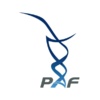PAF Awards $48,500 Research Grant
Guofang Zhang, PhD, Duke University
“Propionyl-CoA and propionylcarnitine mediate cardiac complications in patients with propionic acidemia”
Energy production is the central cardiac metabolism for continuous mechanical work. An average human adult heart consumes ~ 6 kg ATP/day. ATP storage in the heart is only sufficient to sustain the heart beat for a few seconds. A tightly coupled cardiac energy metabolism from various substrates is critical for sufficient ATP production required by normal heart function.
One molecule of palmitic acid (fatty acid) generates much more ATP than one molecule of glucose does after their complete metabolism.Fatty acids contribute ~70-90% cardiac energy production in normal condition. However, heart still maintains high flexibility of fuel switch in response to various available substrates. Acetyl-CoA is the first convergent metabolite derived from the diverse fuel substrates via different pathways and enters tricarboxylic acid cycle (TCAC) for energy production. Therefore, the level of acetyl-CoA or the ratio of acetyl-CoA/CoA tightly controls the metabolic fluxes from two major fuels, i.e.,glucose and fatty acid, in the heart. Acetyl-CoA or CoA level is also finely tuned by carnitine acetyltransferase (CrAT) that catalyzes the reversible interconversion between short-chain acyl-CoAs and acylcarnitines.Acetylcarnitine level is ~10-100 fold greater than that of acetyl-CoA in heart and is seen as the buffer of acetyl-CoA. CrAT is highly expressed in high energy demanding organs including heart and mediates fatty acid and glucose metabolism possibly by dynamically interconverting acetyl-CoA and acetylcarnitine into each other.The deficiency of CrAT has been shown to change cardiac fuel selection.
Propionic acidemia (PA) is often associated with cardiac complications. However, the pathological mechanism remains unknown. We have demonstrated that high exogenous propionate led to the propionyl-CoA accumulation and cardiac fuel switch from fatty acid to glucose in the perfused normal rat hearts (Am. J Physiol. Endocrinol. Metab.,2018,315:E622-E633). The deficiency of propionyl-CoA carboxylase in PA also induces the accumulation of propionyl-CoA. Next, we will attempt to understand whether and how the elevated propionyl-CoA in the Pcca-/- heart (collaboration with Dr. Michael Barry)could interrupt cardiac energy metabolism by investigating the fuel switch flexibility, CrAT mediated metabolism, and buffer capacity of acetylcarnitine using stable isotope-based metabolic flux analysis (J. Biol. Chem., 2015,290:8121-32). We hope that the outcome of this project will provide meaningful therapeutic recommendation for patients with PA, especially with the cardiac complication.
